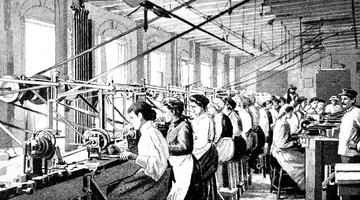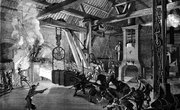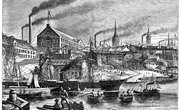The main role of a woman in the early 1800s was to stay home and undertake all the domestic chores, as well as taking care of the husband and children. The Industrial Revolution created many opportunities, thus women started taking up factory jobs in the late 1800s. Women contributed to the economy by performing domestic duties and factory jobs.
Subsistence Economy
Households sought to independently provide foods for families instead of relying solely on purchases from merchants. Most families had family gardens. It was the sole responsibility of women to look after family gardens after men assisted in digging the grounds. Women tended to plant crops, weed the garden, add fertilizer and harvest the crops. Many families reared livestock including goats, chicken, sheep, pigs and horses. Women fed, watered, milked and took care of the livestock. Women processed wool from sheep to make clothes, bed sheets, pillows and quilts. They also picked a variety of berries for making wines, jams and jellies that they bartered to acquire provisions for the family.
Textile Industry
Industrialization accelerated the growth in the emerging textile industry in the 1800s. It was easier for women to work in the textile mills because they were used to making clothes for their families. These textile industries employed women although they received low wages, worked in crowded environments and their movements were restricted. Most women who worked in the textile mills were young and left once they were married to look after their families.
Wage Labor
The kind of work that women did depended on the class they belonged to. The underclass and the lower-working class women were employed as domestic workers and carried out tasks such as caring for the children, tending to livestock and family gardens, and washing clothes for the rich. These women also sewed and sold cooked foods to forge a living. The upper-class women were educated and could work as teachers, innkeepers, clerks and accountants.
Fishery Industry
Fishing was a major economic activity for people living near oceans, lakes, rivers and seas. Actual fishing, building of boats and making of nets and traps to catch the fish was done by men. Women played a vital role in the trade because they helped process the fish. Women prepared fish by scaling, de-boning, and curing it through salting, as well as drying it for preservation. All these preparations determined the quality and price of the fish taken to the merchants.
Related Articles
References
Writer Bio
Jane Doucet has been writing professionally since 2003. Her articles have been published with the "Canadian Living," "Gardening Life," "Homemakers," "Reader's Digest" and "Halifax Magazine," among other publications. Doucet holds a Master of Arts in journalism from University of King's College, Halifax.











